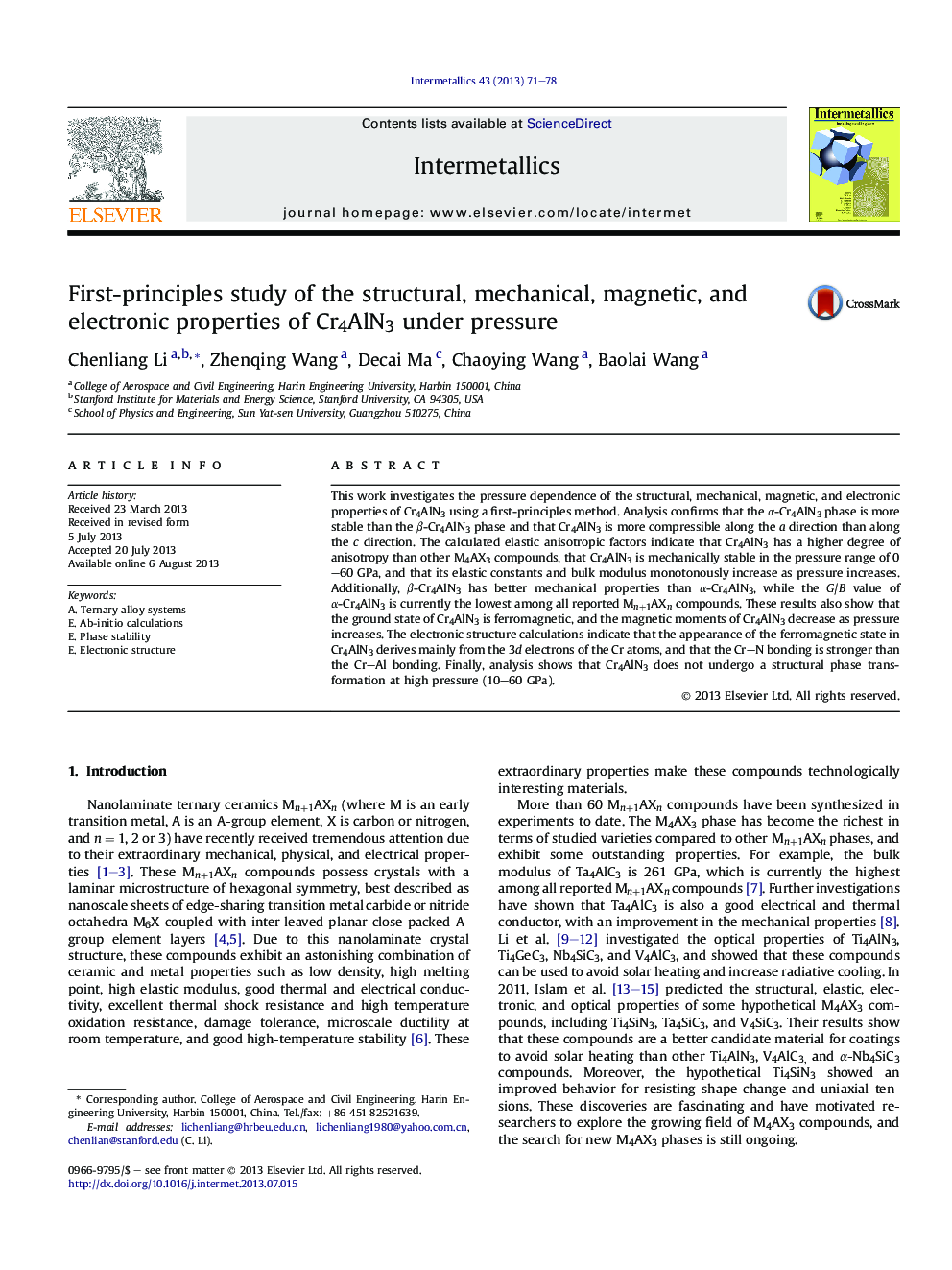| Article ID | Journal | Published Year | Pages | File Type |
|---|---|---|---|---|
| 1600199 | Intermetallics | 2013 | 8 Pages |
•The α-Cr4AlN3 phase is more stable than the β-Cr4AlN3 phase.•Cr4AlN3 is stiffer along the c direction than along the basal plane.•The β-Cr4AlN3 phase has improved mechanical properties compared with the α-Cr4AlN3 phase and Cr2AlN.•The ground state of Cr4AlN3 is ferromagnetic, and its magnetic moments decrease as pressure increases.•Cr4AlN3 does not undergo a structural phase transformation at high pressure (10–60 GPa).
This work investigates the pressure dependence of the structural, mechanical, magnetic, and electronic properties of Cr4AlN3 using a first-principles method. Analysis confirms that the α-Cr4AlN3 phase is more stable than the β-Cr4AlN3 phase and that Cr4AlN3 is more compressible along the a direction than along the c direction. The calculated elastic anisotropic factors indicate that Cr4AlN3 has a higher degree of anisotropy than other M4AX3 compounds, that Cr4AlN3 is mechanically stable in the pressure range of 0–60 GPa, and that its elastic constants and bulk modulus monotonously increase as pressure increases. Additionally, β-Cr4AlN3 has better mechanical properties than α-Cr4AlN3, while the G/B value of α-Cr4AlN3 is currently the lowest among all reported Mn+1AXn compounds. These results also show that the ground state of Cr4AlN3 is ferromagnetic, and the magnetic moments of Cr4AlN3 decrease as pressure increases. The electronic structure calculations indicate that the appearance of the ferromagnetic state in Cr4AlN3 derives mainly from the 3d electrons of the Cr atoms, and that the Cr–N bonding is stronger than the Cr–Al bonding. Finally, analysis shows that Cr4AlN3 does not undergo a structural phase transformation at high pressure (10–60 GPa).
